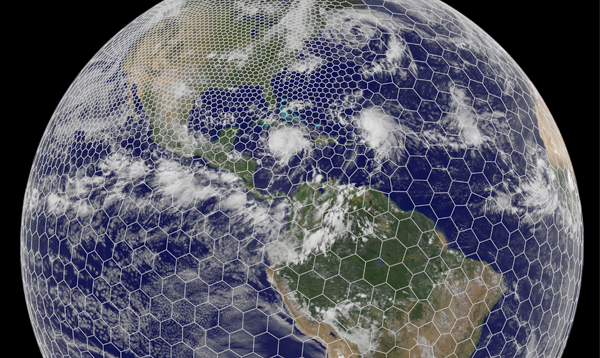UCAR Congressional Briefing: Moving research to industry
Weather forecasting companies use latest science to protect lives, boost economy
Nov 14, 2017 - by Staff
Nov 14, 2017 - by Staff
WASHINGTON — Federally funded scientific advances are enabling the multibillion-dollar weather industry to deliver increasingly targeted forecasts to consumers and businesses, strengthening the economy and providing the nation with greater resilience to natural disasters, experts said today at a congressional briefing.
The panel of experts, representing universities, federally funded labs, and the private sector, said continued government investment in advanced computer modeling, observing tools, and other basic research provides the foundation for improved forecasts.
The nonprofit University Corporation for Atmospheric Research (UCAR) sponsored the briefing.
"Thanks to a quiet revolution in modern weather prediction, we can all use forecasts to make decisions in ways that wouldn't have been possible just 10 years ago," said Rebecca Morss, a senior scientist with the National Center for Atmospheric Research (NCAR) and deputy director of the center's Mesoscale and Microscale Meteorology Lab. "Now we are looking to the next revolution, which includes giving people longer lead times and communicating risk as effectively as possible."
Fuqing Zhang, a professor of meteorology and statistics at Pennsylvania State University, highlighted the ways that scientists are advancing their understanding of hurricanes and other storms with increasingly detailed observations and computer modeling. Researchers at Penn State, for example, fed data from the new National Oceanic and Atmospheric Administration GOES-R satellite into NOAA's powerful FV3 model to generate an experimental forecast of Hurricane Harvey that simulated its track and intensity.
"The future of weather forecasting is very promising," said Zhang, who is also the director of the Penn State Center for Advanced Data Assimilation and Predictability Techniques. "With strategic investments in observations, modeling, data assimilation, and supercomputing, we will see some remarkable achievements."
Mary Glackin, director of science and forecast operations for The Weather Company, an IBM business, said the goal of the weather industry is to help consumers and businesses make better decisions, both by providing its own forecasts and by forwarding alerts from the National Weather Service. The Weather Company currently is adapting a powerful research weather model based at NCAR, the Model for Prediction Across Scales (MPAS), for use in worldwide, real-time forecasts.
"We have a weather and climate enterprise that we can be extremely proud of as a nation, but it's not where it should be," Glackin said. "Weather affects every consumer and business, and the public-private partnership can play a pivotal role in providing better weather information that is critically needed."
Antonio Busalacchi, president of UCAR, emphasized the benefits of partnerships across the academic, public, and private sectors. He said that research investments by the National Science Foundation, NOAA, and other federal agencies are critical for improving forecasts that will better protect vulnerable communities and strengthen the economy.
"These essential collaborations between government agencies, universities, and private companies are driving landmark advances in weather forecasting," Busalacchi said. "The investments that taxpayers are making in basic research are paying off many times over by keeping our nation safer and more prosperous."
The briefing was the latest in a series of UCAR Congressional Briefings that draw on expertise from UCAR's university consortium and public-private partnerships to provide insights into critical topics in the Earth system sciences. Past briefings have focused on wildfires, predicting space weather, aviation weather safety, the state of the Arctic, hurricane prediction, potential impacts of El Niño, and new advances in water forecasting.

The NCAR-based Model for Prediction Across Scales simulates the entire globe while enabling scientists to zoom in on areas of interest. It is one of the key tools for improving forecasts in the future. (©UCAR. This image is freely available for media & nonprofit use.)